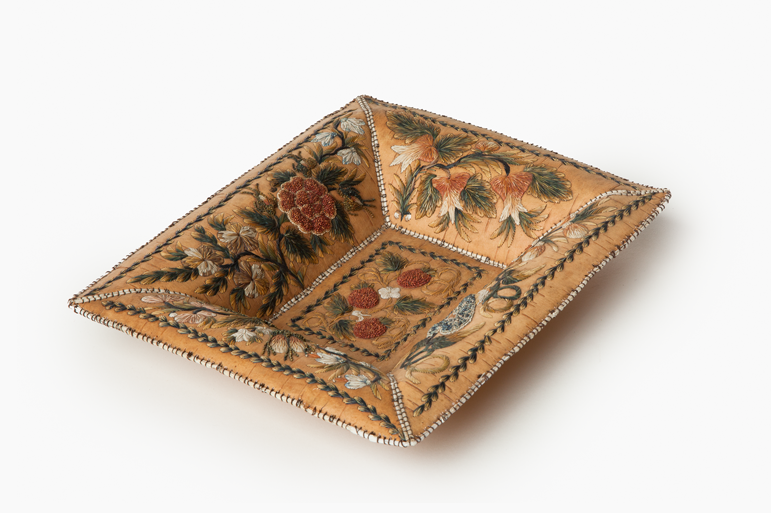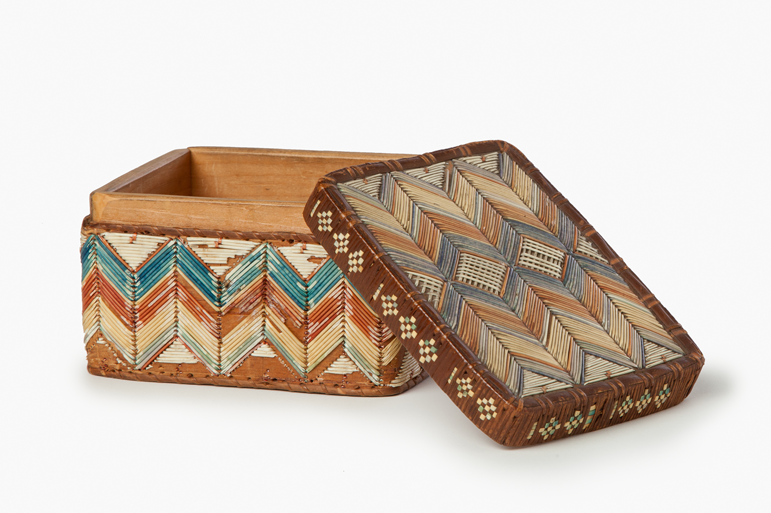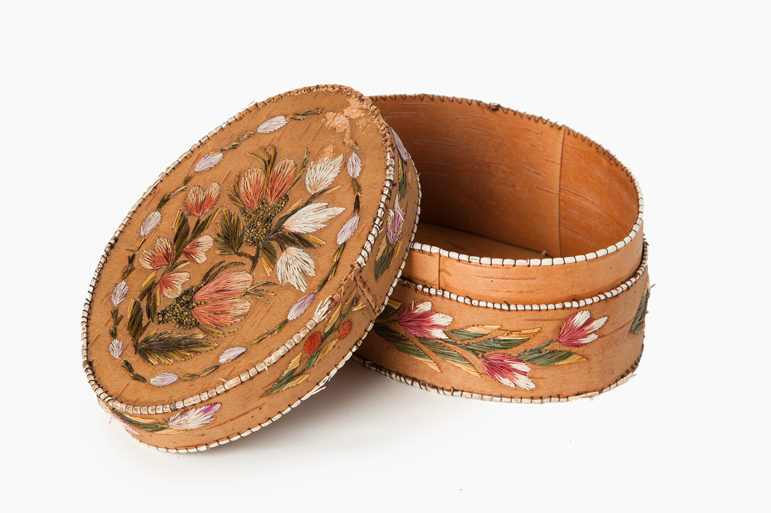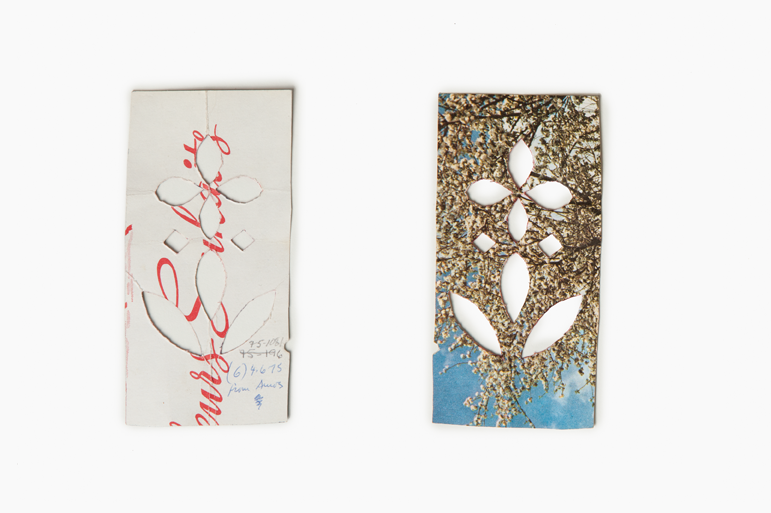Different types of moccasins
“Before a ceremony, the first thing I do is put on my moccasins. I feel different when I’m wearing moccasins—it’s not like wearing shoes. It’s a detail that makes a difference. As soon as they’re on my feet, I can feel how the calmness comes over me. They give me my spiritual self back.”
Fred Kistabish, Anishinabe (Algonquin)
Moccasins are made with various techniques and materials for different seasons. There are men’s, women’s, and children’s moccasins, as well as special ones for ceremonies and powwows.
The Atikamekw Nehirowisiwok have special waterproof moccasins for winter. They make them out of skin taken from the hind legs of a moose killed in spring.

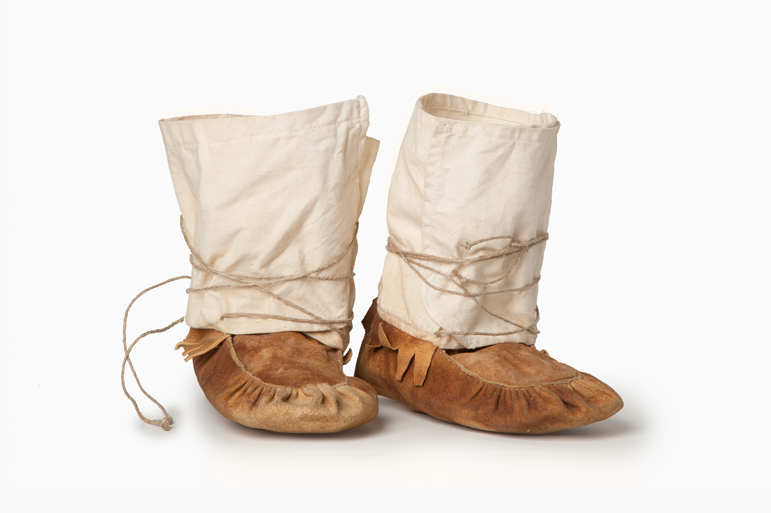
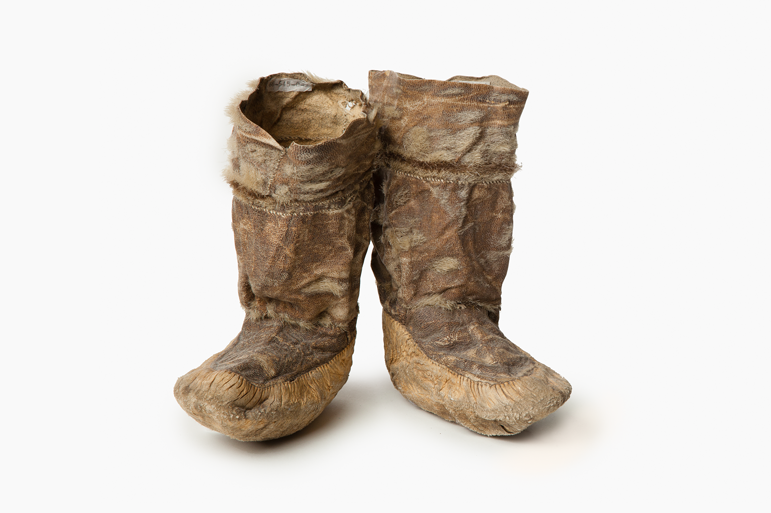
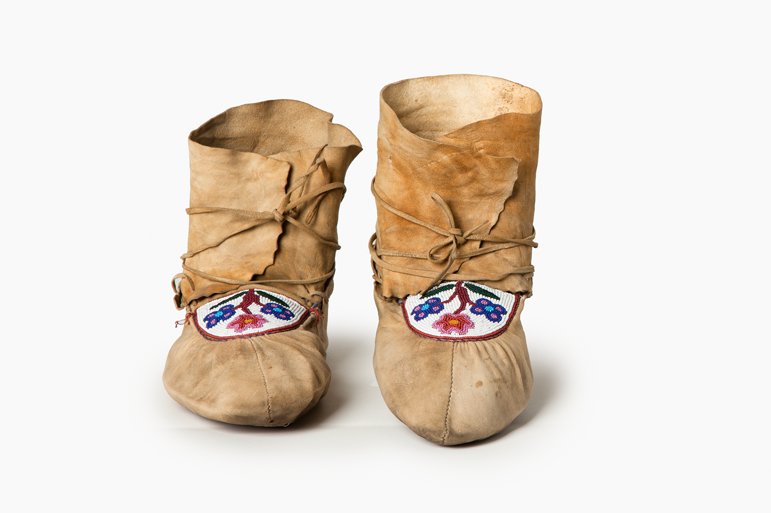
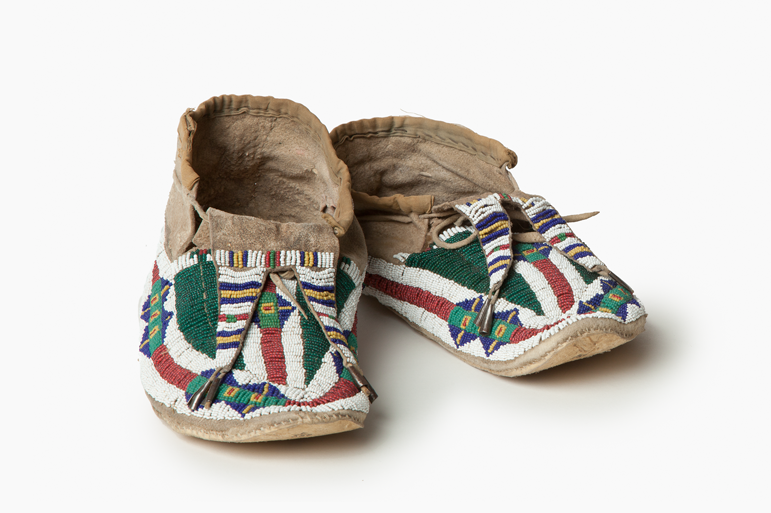
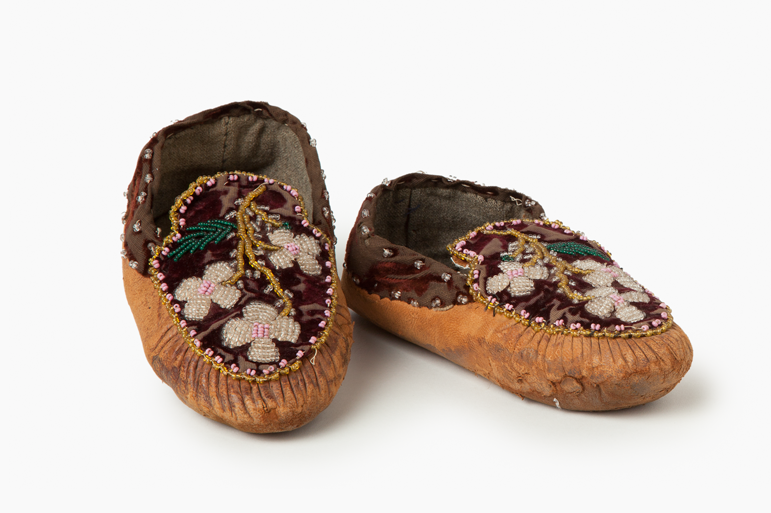
1. Boot
Inuit, Kangiqsujuaq
Leather, fiber, cotton
Les Musées de la civilisation, 66-545-1
Photograph : Jessy Bernier – Perspective
2. Moccasin
Eeyou, Chisasibi
Moosehide, fiber, cotton
Les Musées de la civilisation, 66-498
Photograph : Jessy Bernier – Perspective
3. Boot
Maggie Lamboy
Eeyou, Chisasibi
1965
Ringed seal skin
Les Musées de la civilisation, 66-545-1
Photograph : Jessy Bernier – Perspective
4. Moccasin
Anishinabe (Algonquin)
Moosehide, glass beads
Les Musées de la civilisation, 68-3233
Photograph : Jessy Bernier – Perspective
5. Moccasin
Cheyenne, United States
After 1845
Hide, glass beads, metal, sinew
Les Musées de la civilisation, 68-3390
Photograph : Jessy Bernier – Perspective
6. Moccasin
Wolastoqiyik
19th century
Leather, cotton, silk, wool, glass beads
Les Musées de la civilisation, acquired with the assistance of a Movable Cultural Property Grant from the
Department of Canadian Heritage under the Cultural Property Export and Import Act, 2007-360
Photograph: Jessy Bernier – Perspective
